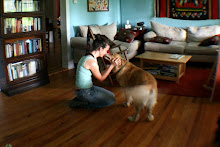Week 11, Holy Week II: Citing this week’s readings, what recommendations would you give churches today celebrating Easter Sunday and Eastertide?
In “The Origins of Easter” Paul Bradshaw points out that the modern day Easter celebration has evolved from two separate ancient traditions. One feast tradition (practiced by the “Quartodecimans”) memorializes the suffering and death of Christ. The other celebrates Christ’s passage from death to life.[1] While the latter tradition is understood to be more universal than the first (as it celebrates Christ’s resurrection rather than memorializing his death), it is important to recognize that modern day practices of Easter have evolved from a combination of both. Just as the “Quartodecimans” memorialized Christ’s death in the context of the whole redemptive act,[2] on Easter Sunday and during Eastertide Christians celebrate the Resurrection only after they have first recognized and mourned Christ’s death during the season of Lent.
The contrast between Lent and Eastertide is essential to the Christian understanding and experience of the whole redemptive act. This is one reason why the Easter Vigil rite, “the original core of the liturgical year,”[3] is at the heart of the paschal mystery. The Easter Vigil, beginning sometime after dark on Saturday night, marks the transition from Lent to Eastertide, the passage from death to life. The Vigil readings communicate that God is no longer absent from our lives:
For a brief moment I abandoned you,
but with great compassion I will gather
you.
In overflowing wrath for a moment
I hid my face from you,
but with everlasting love I will have
compassion on you,
says the LORD, your Redeemer (Isaiah 54.7-8).
Though it may be difficult for many people to participate in a service beginning after dark Saturday and lasting through dawn Sunday, the Vigil would be an invaluable addition to the standard Easter service. Followed by an early breakfast and a service for those members of the congregation unable to attend, the evening/morning Vigil could help to re-establish Easter Sunday and Eastertide at the heart of the church—and with adequate preparation, planning and help, it wouldn’t have to be exhausting!
The vigil includes four parts: the Service of Light, the Service of the Word, the Service of the Water, and the Service of the Bread and Cup. Beginning after dark on Saturday, the vigil opens with the lighting of new fire. This fire is then used to light the Paschal Candle (which remains lit through Eastertide and Pentecost), a tradition carried over from ancient Jewish practice.[4] The Service of the Word includes biblical readings, many from the Old Testament, followed by a short sermon. Following the sermon, the Service of the Water offers the opportunity to commit or recommit to the Word of God through baptism. In addition, I’d suggest honoring those who have come before by naming the list of ancient and modern saints as recommended in The Handbook.[5] The remembrances of deceased loved one and prayers for specific people of the congregation could also be included during the Service of the Water.
Finally, I appreciate The Handbook’s suggestion of bringing in homemade breads to be used in the Service of the Bread and Cup or in the breakfast following the vigil.[6] The Easter Vigil and Sunday services should be designed to encourage the entire congregation to actively participate whether by baking bread, bringing fresh flowers to the service, taking these flowers to home bound congregants after the service, or participating in efforts to revitalize the community. As Raymond Brown points out, “those who were ‘scattered’ by the events of the passion at Jerusalem will once more become a community when they return to the place where they were first called together as disciples.”[7] Eastertide is an opportunity for community members to come together in celebration, sharing their joy and abundance with each other and with the larger community in which they live.
[1] Bradshaw 111
[2] Ibid. 113
[3] Ibid. 124
[4] Handbook 201
[5] Ibid. 208
[6] Ibid. 209
[7] Brown 202
Subscribe to:
Post Comments (Atom)

No comments:
Post a Comment